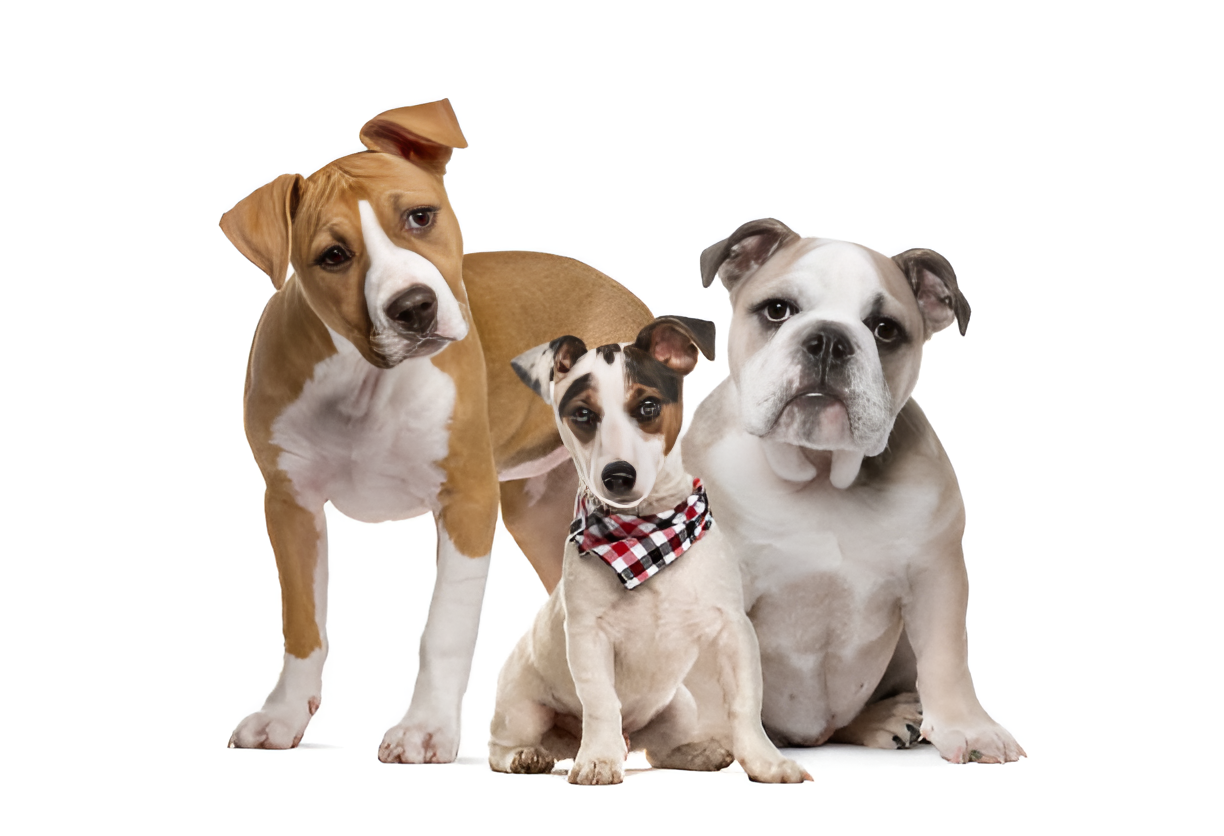Breeding a Pitbull and a Bulldog results in a hybrid known as the Bully Pit, which combines traits from both parent breeds, creating a loyal, protective, and energetic dog. Breeding a Pitbull with a Bulldog can produce a unique and fascinating hybrid known as the Bully Pit. This mix combines the physical and temperamental traits of both breeds, resulting in a dog that can be both a loving family companion and a formidable protector. This comprehensive guide will explore the characteristics, care requirements, and potential challenges of owning a Bully Pit.
Understanding the Parent Breeds
To fully appreciate the Bully Pit, it’s essential to understand the characteristics of the parent breeds: the American Pitbull Terrier and the American Bulldog.
American Pitbull Terrier: Known for their strength, agility, and loyalty, Pitbulls are often misunderstood due to their history in dog fighting. However, they are affectionate and friendly dogs when properly trained and socialized.
American Bulldog: Bulldogs are muscular and sturdy dogs known for their protective nature and strong bond with their families. They were originally bred for farm work and guarding property.
Physical Characteristics of the Bully Pit
The physical appearance of a Bully Pit can vary depending on the traits inherited from each parent. Here are some common characteristics:
Size and Build: Bully Pits are typically medium to large dogs, weighing between 40 to 80 pounds and standing 19 to 24 inches tall. They have a muscular and athletic build, reflecting the strength of both parent breeds.
Head and Face: The head is usually broad and square, with a strong jawline. The ears can be either floppy or cropped, depending on the genetic influence and owner preference.
Coat and Color: The coat is short and smooth, requiring minimal grooming. Bully Pits come in various colors, including white, black, brown, brindle, and combinations of these.
Temperament and Behavior
The temperament of a Bully Pit is a blend of the traits from both the Pitbull and the Bulldog. Here are some key behavioral characteristics:
Loyal and Protective: Bully Pits are known for their loyalty to their families and their protective nature. They can be excellent guard dogs, alerting their owners to any potential threats.
Energetic and Playful: These dogs have high energy levels and require regular exercise to stay healthy and happy. They enjoy playtime and activities that challenge them both physically and mentally.
Affectionate and Social: Despite their tough appearance, Bully Pits are affectionate and enjoy spending time with their families. They can be friendly with other pets and children when properly socialized.
Training and Socialization
Proper training and socialization are crucial for ensuring that a Bully Pit develops into a well-behaved and balanced dog. Here are some tips for training and socializing your Bully Pit:
Early Socialization: Expose your Bully Pit to various people, animals, and environments from a young age. This helps them develop confidence and reduces the likelihood of fear-based aggression.
Positive Reinforcement: Use positive reinforcement techniques, such as treats and praise, to encourage good behavior. Avoid punishment-based methods that can cause fear and anxiety.
Consistency and Patience: Be consistent with your training commands and routines. Patience is key, as Bully Pits can be stubborn and require time to learn new behaviors.
Health and Care
Bully Pits are generally healthy dogs, but they can be prone to certain health issues inherited from their parent breeds. Here are some common health concerns and care tips:
Hip Dysplasia: This genetic condition affects the hip joints and can cause pain and mobility issues. Regular veterinary check-ups and maintaining a healthy weight can help manage this condition.
Skin Allergies: Bully Pits can be prone to skin allergies, which can cause itching and discomfort. Regular grooming and a balanced diet can help keep their skin healthy.
Exercise Needs: Ensure your Bully Pit gets plenty of exercise to prevent obesity and keep them mentally stimulated. Daily walks, playtime, and interactive toys are essential.
Potential Challenges
Owning a Bully Pit can come with certain challenges that potential owners should be aware of:
Training and Socialization: Due to their strong-willed nature, Bully Pits require consistent training and socialization. Inexperienced owners may find this challenging.
Perception and Stigma: Both Pitbulls and Bulldogs have reputations for being aggressive, which can lead to negative perceptions and stigma. Responsible ownership and proper training can help counteract these stereotypes.
Space Requirements: Bully Pits are active dogs that need space to run and play. They may not be suitable for apartment living unless they receive ample exercise.
Conclusion
In conclusion, breeding a Pitbull and a Bulldog results in a unique hybrid known as the Bully Pit, which combines the best traits of both parent breeds. These dogs are loyal, protective, and energetic, making them excellent companions for active families. However, they require proper training, socialization, and care to thrive. By understanding the characteristics and needs of the Bully Pit, you can ensure a happy and healthy life for your new furry friend.
The photo featured below the post headline is Credit: GlobalP/istockphoto
I hope you find this post helpful and informative. If Yes’ feel free to share it with your friends!
Frequently Asked Questions
What is a Bully Pit?
A Bully Pit is a hybrid dog resulting from breeding an American Pitbull Terrier with an American Bulldog.
What are the physical characteristics of a Bully Pit?
Bully Pits are medium to large dogs with a muscular build, broad head, and short coat. They come in various colors, including white, black, brown, and brindle.
Are Bully Pits good family pets?
Yes, Bully Pits can be excellent family pets when properly trained and socialized. They are loyal, protective, and affectionate.
What health issues are common in Bully Pits?
Common health issues include hip dysplasia and skin allergies. Regular veterinary check-ups and a balanced diet can help manage these conditions.
How much exercise does a Bully Pit need?
Bully Pits require regular exercise, including daily walks, playtime, and mental stimulation, to stay healthy and happy.

